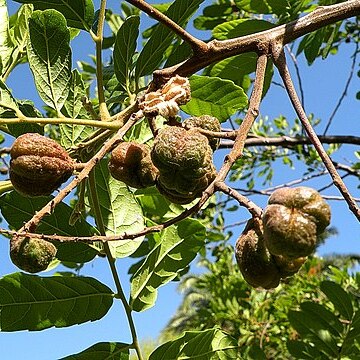Polygamous shrubs or trees with terete, sulcate stems; young branchlets usually pubescent. Leaves even-or odd-pinnate; leaflets alternate or rarely subopposite, entire or dentate, often glabrous on the upper surface, glabrous or pubescent on the lower surface, petiolate, exstipulate. Inflorescences paniculate or racemiform thyrses. Flowers small, regular; sepals 5, free, imbricate in two rows, orbicular, concave; petals 5, naked or with 1-or 2 scales within; disc annular and tumid, lobed, tomentose or glabrous; stamens usually 8, inserted within the disc, exserted in the staminate flowers, the filaments subulate-filiform, tomentose or glabrous; ovary 2-4-valvate, glabrous or pubescent outside, glabrous, tomentose or hispid inside. Fruits with seeds subglobose or oblong, arillate; embryo thick, curved, the cotyledons plano-convex, the radicle inflexed.

